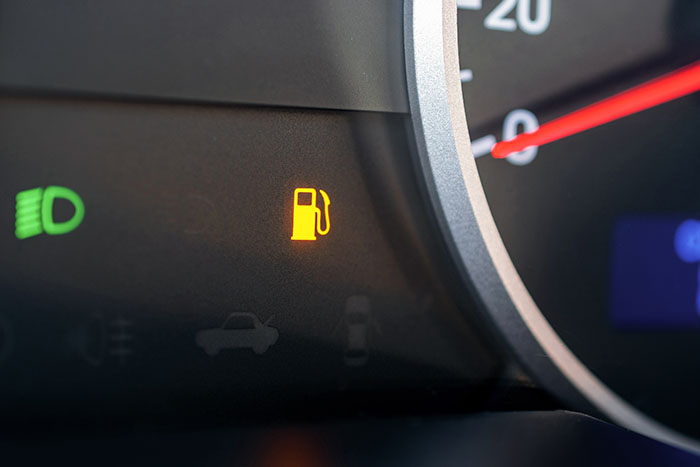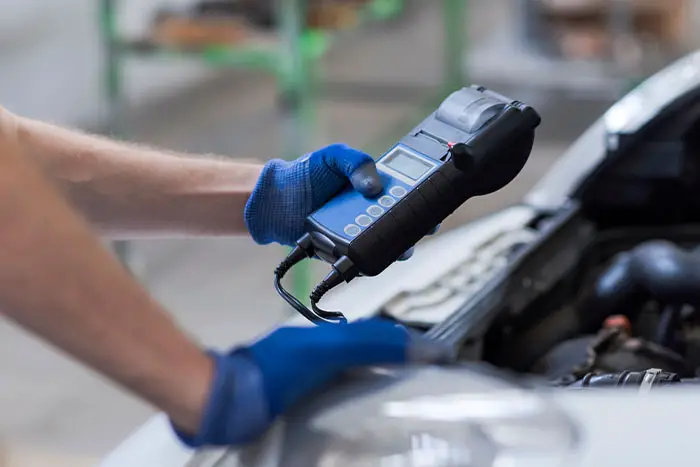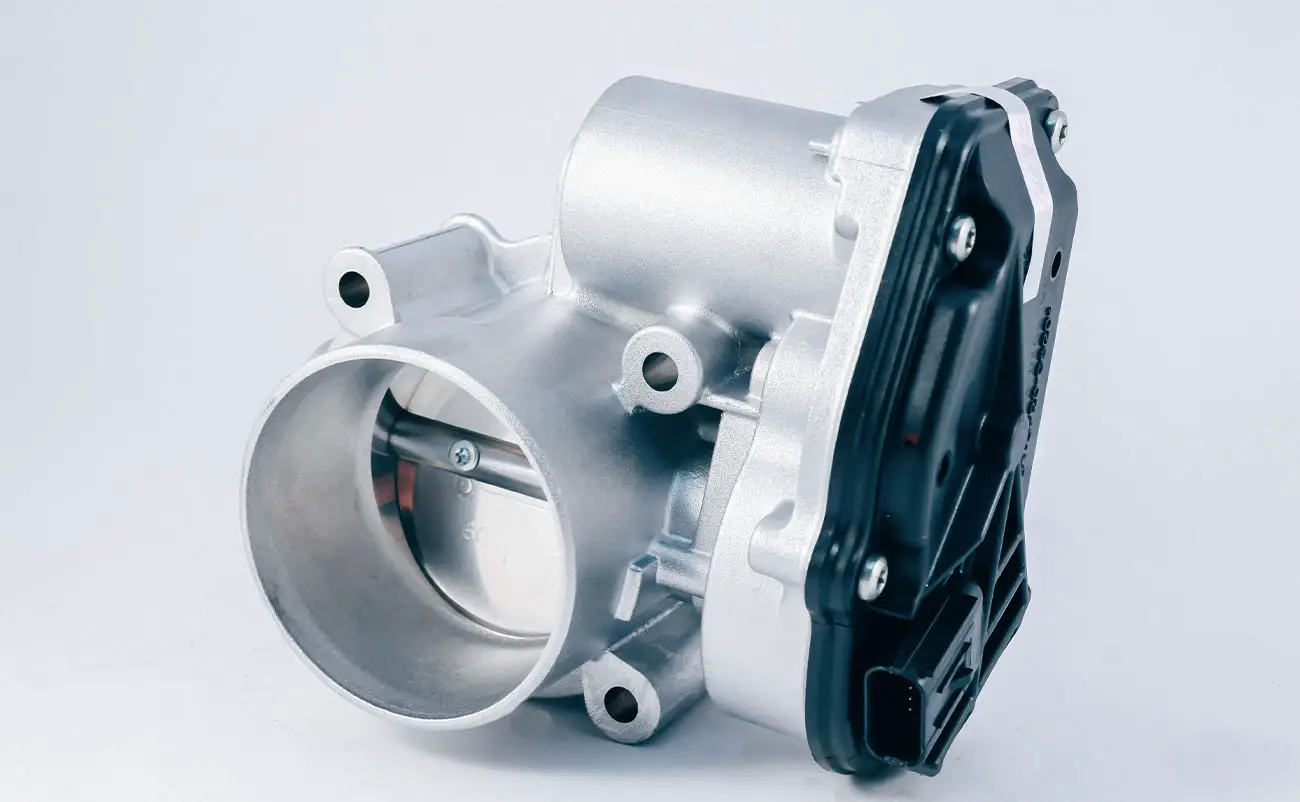When you press the gas pedal in your car, you expect the vehicle to accelerate. But have you ever thought about why that happens? A mechanical linkage connected the accelerator pedal to the throttle body in older cars. The harder you pressed the gas pedal, the further the throttle body would open because a cable was pulling it open. However, today’s cars are mostly controlled by computers. Even the throttle in most modern vehicles is controlled using electronic throttle control, and the gas pedal is connected to sensors instead of a physical cable. Keep reading as we tell you exactly how electronic throttle control works and how to fix it when things go wrong.
Table of Contents
What Is Electronic Throttle Control?
Electronic throttle control (ETC) is a throttle control system that is controlled by sensors and your car’s computer (ECU). As we previously mentioned, older vehicles use a cable system to control the throttle. However, electronic throttle control systems are present on most newer vehicles.
The gas pedal is connected to a sensor that tells the car’s computer its position. The car’s computer then relays this information to the electronic throttle body (ETB). The throttle position sensor determines the position of the throttle plate inside the throttle body, and the computer decides whether the butterfly valve needs to open or close. A small electric actuator opens and closes the valve inside the throttle body based on the position of the gas pedal and the throttle plate.
An electronic throttle control system has many benefits over a traditional cable system. First, electronic systems are more fuel efficient because the computer can spray the precise amount of fuel into the combustion chamber based on the throttle’s position. Next, the output of the sensors can easily be integrated with other electronic systems on the car, like the cruise control system, traction control system, transmission control module, engine control module (ECM), powertrain control module (PCM), and other parts. You can quickly see that the entire automotive industry is getting much more high-tech! So, how can you tell when you have a problem with your ETC? We’ll give you those symptoms in the next section.
Symptoms Of A Faulty Electronic Throttle Control System

You might already know the symptoms of a bad throttle body or how to tell when your cable throttle system is having problems. So, how can you tell when you have issues with your electronic throttle control? Many of the symptoms are the same ones you would experience with a cable system. Here is what to watch for.
The first symptom of a faulty ETC is a rough idle. When your car runs at idle, the idle air control valve lets a small amount of air pass through the throttle body. This airflow should be consistent so that the engine runs at a constant RPM. However, problems with the system can cause inconsistent airflow and lead to your RPMs bouncing around. This can cause a low idle, high idle, or very rough idle that bounces between high and low.
Next, decreased fuel economy can point to problems with your ETC system. Problems with the ETC system can cause too much or too little airflow into your combustion chamber. When that happens, your fuel system will usually attempt to add more fuel to account for the extra air. This will cause a reduction in your gas mileage, and you will start to see that add up at the pump.
Acceleration problems or reduced engine performance is another big sign of a problem with your throttle’s electronic control. Issues with the throttle position sensor (TPS) can result in sluggish acceleration or sporadic throttle response. Imagine pressing the gas pedal in traffic, but your car does not accelerate. This could present a dangerous driving situation and should be addressed immediately. Finally, a failed emissions test or your car going into limp mode can signal problems with your ETC. Again, throttle system problems should not be ignored, and they should be fixed immediately.
Electronic Throttle Control Warning Light — Why Is It On?
Most cars that are equipped with electronic throttle control have an ETC warning light. The warning light will illuminate when the car’s control unit determines that the system has a malfunction. You may also see a message that reads, “Service electronic throttle control.” Here are the main reasons that you might see your car’s ETC warning light appear.
— Faulty Throttle Position Sensor
Your car’s throttle position sensor tells the computer the position of the throttle. By using this data, the computer knows how much airflow is entering the system; thus, it knows how much fuel needs to be delivered by the fuel injection system. If there is a problem with the throttle position sensor, then the throttle is either allowing more or less air into the system than it should be. If the computer does not know the precise position of the throttle valve, you could experience a loss of engine power, rough idling, engine stalling, or unintended acceleration.
— Sticking Electronic Throttle Body
When a trouble code causes the ETC warning light to illuminate, it might be due to a sticking throttle body. Remember that an electronic throttle body uses a small electric motor to open and close the throttle valve. Carbon buildup and other deposits in the throttle body can cause the motor to malfunction or the valve to stick. This can have an effect on your engine speed, and it can result in dangerous driving conditions. The valve could get stuck either open or closed, and neither condition is good.
— Bad Accelerator Sensor
This was never a problem on drive-by-wire throttle systems since the throttle was connected directly to the gas pedal, but electronic throttle control systems use an accelerator pedal position sensor to determine how far you have pressed the pedal. The position of the pedal is relayed by the accelerator pedal module to the ECU. If this sensor has problems, the computer might think that you are pressing the pedal harder than you really are. This could lead to unintended acceleration. On the other hand, the computer might not register the fact that you have pressed the pedal. This can lead to hesitation or sluggish acceleration. Problems with these sensors usually cause the ETC warning light to illuminate, and you should get the issue corrected immediately.
How To Repair Your Electronic Throttle Control System

The first step in repairing your ETC system is troubleshooting the specific cause of the problem. Similar to a check engine light, the ETC warning light can be caused by several different problems. Diagnosing the specific cause can sometimes be difficult, and you will likely need the help of a professional mechanic.
Thankfully, simply cleaning your electronic throttle body will often fix the problem. Cleaning a throttle body is not an extremely complex task, and most backyard mechanics can perform this task on their own. With a few basic hand tools and a can of throttle body cleaner, you can have your vehicle running like new again.
However, if throttle control sensors or other parts have failed in the system, a replacement will be necessary. Some sensors, like the throttle position sensor, can be replaced on their own. However, complete throttle body replacement is needed in some cases. This job will require the removal of the old throttle body and replacement with a new part.
After cleaning or replacement, the car’s computer will need to relearn and recalibrate the throttle system. You might experience a rough idle for a few minutes upon the first startup after the repair. However, the idle should smooth out quickly, and you should notice that your engine performs well during a test drive. If you still have issues after your ETC repair, then you should consult the help of a mechanic to figure out the cause of the problem.
ETC System Repair Costs
At this point, you are probably wondering how much it will cost you to fix your ETC system. The answer depends on the specific problem you are experiencing. If you need to replace your entire throttle body, you can expect to spend between $500 and $1,500. Electronic throttle bodies are more expensive than mechanical throttle bodies, and the labor required to complete the job is usually more expensive as well.
Thankfully, replacing a sensor or cleaning your throttle body will not cost you as much. If you can perform the cleaning on your own, it will only cost you about $20. Likewise, a throttle position sensor may cost anywhere from $20 to $50. Labor to replace the sensor will usually be less than $300. So, if you do experience problems with your ETC, the best-case scenario is either a cleaning or sensor replacement. The worst-case problem is that your electronic throttle body needs replacing.
The Bottom Line
If you have a newer vehicle, there is a good chance that your car has an electronic throttle control. This means that the throttle is controlled by sensors and your car’s computer instead of a cable connected to the gas pedal. An electronic throttle control system has many benefits, but it can also have problems as well. If you see an ETC warning light, notice reduced fuel economy, have an erratic throttle response or see a message that your car is in limp mode, you might have a problem with your ETC system. Throttle problems can present safety hazards, so do not ignore them!
Frequently Asked Questions
What causes throttle control failure?
One of the biggest causes of throttle control failure is the buildup of carbon and other deposits inside the throttle body. These deposits can cause the electronic components inside the throttle system to quit working. For this reason, you should always use Top Tier gasoline in your vehicle, and you should clean your throttle body every 75,000 to 100,000 miles. Sensor failures can also cause a failure of your throttle system. A bad throttle position sensor, accelerator pedal position sensor, or speed sensor will lead to issues with the throttle system.
What is the difference between electronic throttle control and mechanical throttle control?
The biggest difference between electronic throttle control and mechanical throttle control is the method by which the throttle valve is moved. In a mechanical system, a cable connects the gas pedal to the throttle body. When the pedal is pressed, the cable opens the valve inside the throttle body. However, an electronic system uses sensors to determine the position of the gas pedal and throttle valve. The reading from these sensors is sent to the car’s computer, and the computer controls a small electric actuator that opens and closes the throttle valve.
Can I drive my car with the throttle control warning light illuminated?
Yes, you can usually still drive your car with the electronic throttle control light illuminated. However, you should not ignore the light, and you should have the problem fixed as soon as possible. Problems with your throttle system can be dangerous, especially when driving in traffic. Stalling or unintended acceleration could lead to an accident, so you should not drive longer than absolutely necessary once you see the ETC warning light.

